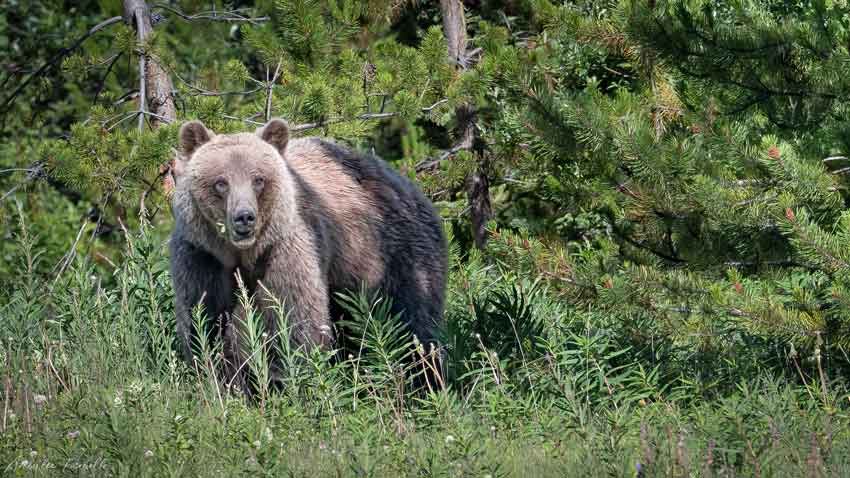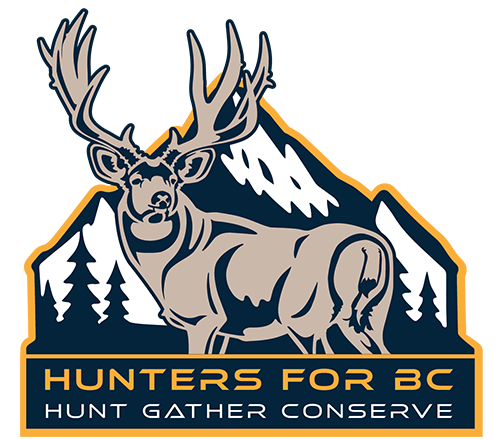
DEADLINE FOR FEEDBACK HAS BEEN EXTENDED TO SEPTEMBER 8, 2023
Hunters for BC has reviewed the Grizzly Bear Stewardship Framework and provides the following feedback, in summary.
H4BC FEEDBACK SUBMISSIONH4BC supports the reinstatement of a resident Grizzly bear hunt in B.C.
We argue that while some Grizzly bear populations need ongoing protection, others do not. Although the historical Grizzly bear harvest through licensed hunting stood at approximately 2%, when used as a conservation and ungulate species recovery strategy under regional management, the impact of apex predator harvesting on ungulate populations will inevitably exceed zero and should not be disregarded.
The wildlife, including Grizzly bears, that we enjoy today is the consequence of active wildlife management that has largely included hunter harvest. It’s not accidental survival and the resistance to management comes primarily from urban belief in miraculous self-regulation.
H4BC supports First Nations initiatives to reinstate the Grizzly bear hunt beyond their cultural and ceremonial purposes, as is their right as co-managers of wildlife.
The debate surrounding reinstatement of the Grizzly bear hunt intersects with the broader issues of Indigenous rights and representation. A government committed to UNDRIP and co-governance of wildlife cannot ignore the numerous First Nations communities that are seeking a reversal of the ban on licensed, regulated Grizzly bear hunting.
We advocate for a B.C. Government pledge to allocate funding and meaningful legislation for the implementation of actions, demonstrating a resolute dedication to science-driven management principles.
We express our frustration with what we perceive to be an overall “rinse and repeat” of previous B.C. Government commitments to the 1995 Grizzly Bear Conservation Strategy. As noted in the 2017 An Independent Audit of Grizzly Bear Management, there have been similar commitments made to Grizzly bears that have failed to reach their intended goals. Developing concrete, time-sensitive strategies with clear-cut priorities and actionable steps will enhance our Grizzly bear populations’ prospects. Looking back in another three decades, we could be commemorating achievements instead of revisiting the need to rework stewardship plans for Grizzly bears, or any other species, yet again.
The lack of concrete actions outlined in this Framework raises concerns, leading us to question whether this might be another attempt to develop a plan without clearly defined and attainable outcomes.
We hold significant apprehensions regarding various absent components within the Grizzly Bear Stewardship Framework, such as precise inventory plans, impactful monitoring approaches, clearly defined GBPU (Grizzly Bear Population Unit) objectives, sustained dedication to research, and the identification of priorities regarding large connecting habitats.
The Grizzly Bear Stewardship Plan developed unfortunately falls short in its efforts to action the pressing issue of human-wildlife conflict. While the plan does acknowledge the importance of mitigating conflicts between humans and Grizzly bears, it lacks a comprehensive strategy for significantly reducing such conflicts.
Commercial Bear Viewing Framework – 100 Meter Distance
Commercial Bear Viewing and hunting can and should co-exist. We do disagree with the popular belief that Commercial Bear Viewing is a non-consumptive use of a resource.
What is bear viewing, if not consumptive use of the land and its wild inhabitants with the potential for very real negative impacts. At a minimum, we propose the elimination of the 50 – 150-meter viewing distance and advocate for the establishment of a stringent 100-meter policy. Our aspiration is for robustly formulated legislation to direct the licensing and conduct of bear viewing activities.
It’s unrealistic to expect the public to comprehensively grasp a 75-page stewardship document and subsequently provide meaningful feedback within that extensive content, hindering active and thoughtful public participation.
Currently, the 75-page Grizzly Bear Stewardship Framework is overwhelming and will deter widespread understanding, likely to affect the value of feedback submitted. We propose the B.C. Government introduce a more concise and accessible version of these types of documents that distills key points and strategies into a format that is easier for the public to digest.
By creating a condensed version that highlights the most critical information, we can capture the attention of a broader audience and encourage greater awareness and participation. This simplified document would serve as an introductory guide, outlining the essential aspects of Grizzly bear stewardship, its significance, and the proposed strategies for their conservation.
Ultimately, this initiative aims to bridge the gap between the expert research within the comprehensive document and the public’s engagement. Through simplifying intricate concepts into more accessible language, individuals will gain the ability to engage actively in Grizzly bear stewardship initiatives. This will lead to a heightened sense of community involvement and endorsement, enhancing their shared understanding of the topic and resulting in more dependable responses to your feedback solicitation.
PROVIDE YOUR FEEDBACK
